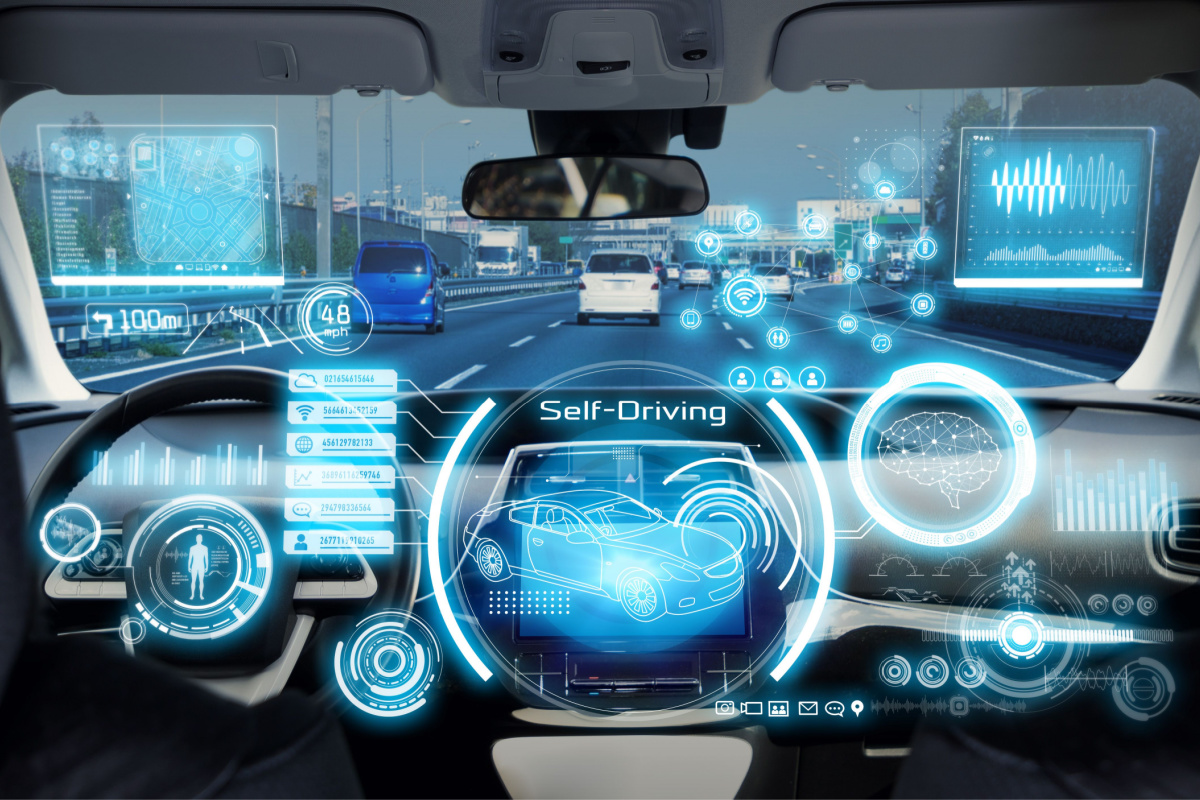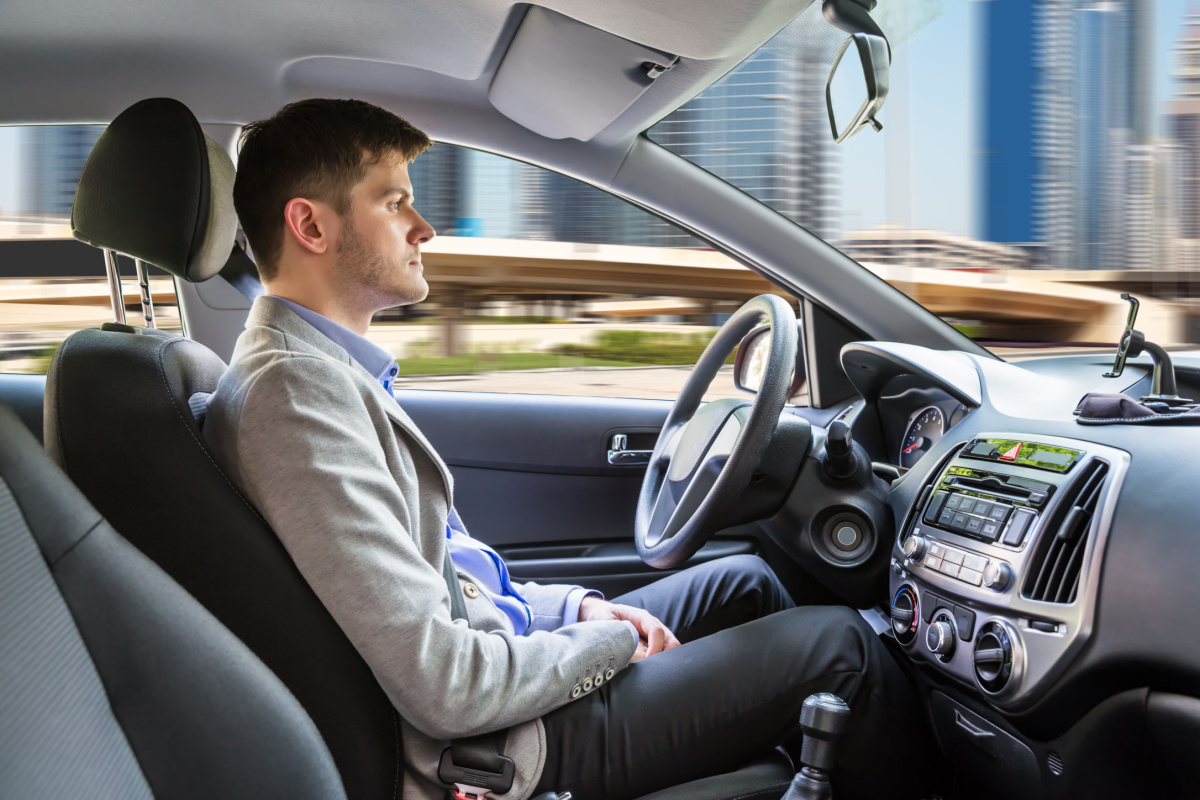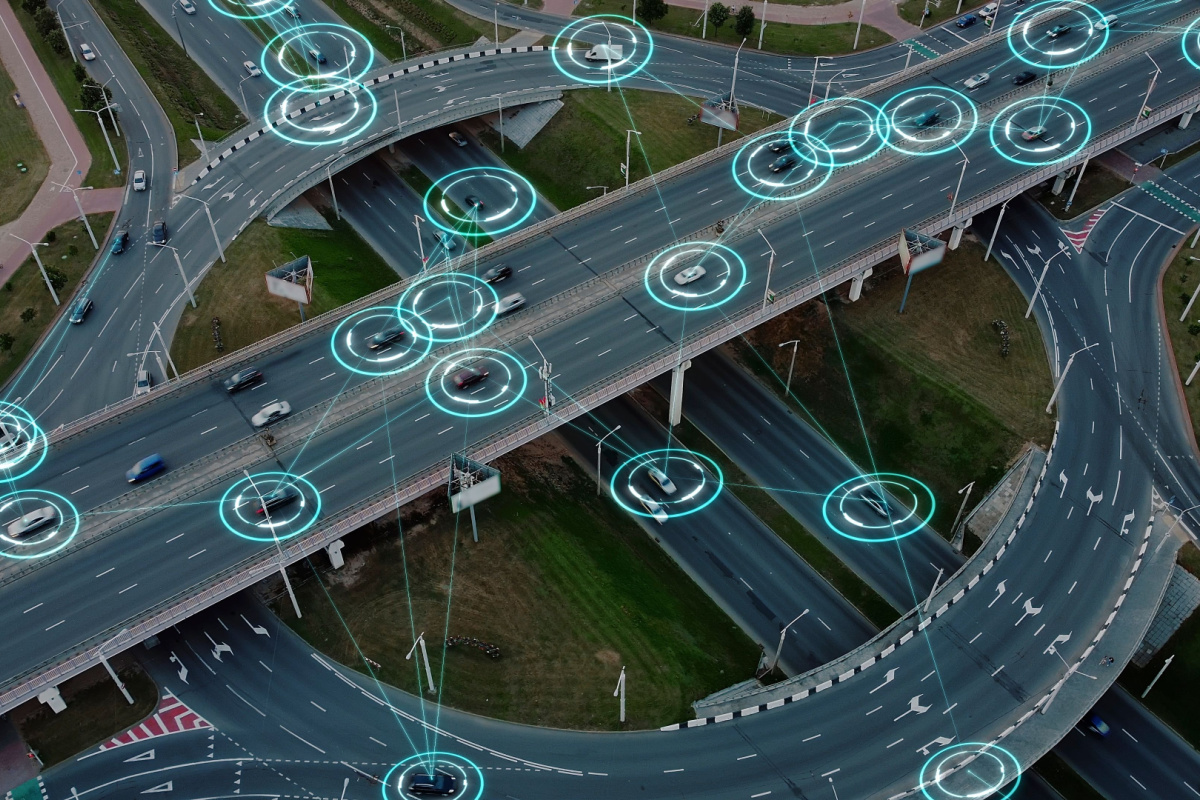Self-Driving Car Insurance: What to Know
Self-driving cars, once the stuff of science fiction, are becoming a reality. While fully autonomous vehicles are not yet available to consumers, many cars now come with self-driving features. If you're considering a car with these advanced capabilities, you might be wondering how they could impact your car insurance rates.
In this blog, we'll explore the world of self-driving car insurance, shedding light on the technology available today and its potential effects on your insurance costs.
Self-Driving Car Technology
Self-driving cars, also known as autonomous vehicles, are a marvel of modern technology. They are designed to navigate and operate without human intervention, relying on a combination of sensors, cameras, radar, and advanced software algorithms.

Let's break down the key components and processes that make self-driving cars work.
Sensors and Perception
Self-driving cars are equipped with an array of sensors that provide a comprehensive view of their surroundings. These sensors include:
- Lidar (Light Detection and Ranging): Lidar sensors emit laser beams to measure distances and create detailed 3D maps of the car's environment.
- Radar: Radar sensors use radio waves to detect objects and their movement, even in challenging weather conditions.
- Cameras: High-resolution cameras capture images and video of the car's surroundings, helping it identify traffic lights, road signs, pedestrians, and other vehicles.
- Ultrasonic Sensors: These sensors are used for close-range detection, helping the car navigate tight spaces and park safely.
Data Processing
The data collected by the sensors is processed in real time by powerful onboard computers. Advanced software algorithms analyze this data to create a dynamic map of the car's environment. This map includes information about the location of objects, their speed, and their proximity to the vehicle.
Localization
To navigate accurately, self-driving cars need to know their precise location on the road. They use a combination of GPS data, high-definition maps, and sensor data to determine their position down to the centimeter.
Perception and Decision-Making
Self-driving cars use artificial intelligence (AI) and machine learning (ML) algorithms to interpret the data from sensors and make driving decisions. They can recognize objects, predict their behavior, and plan a safe route accordingly. This includes actions like changing lanes, braking, accelerating, and turning.
Control and Actuation
Once the car has made a driving decision, it sends commands to the vehicle's actuators, which control the acceleration, braking, steering, and other mechanical systems. These commands ensure that the car follows its planned path and avoids collisions.
Redundancy and Safety
Safety is a paramount concern in self-driving car technology. Most autonomous vehicles are designed with redundant systems, meaning they have backups for critical components like sensors and computers. This redundancy helps ensure that the car can continue driving safely even if a component fails.
What Is The Current State of Self-Driving Car Technology?
The current state of self-driving car technology is a blend of advanced driver assistance systems (ADAS) and varying levels of automation. Most new vehicles come equipped with ADAS, offering features like adaptive cruise control, lane-keeping assist, and automatic emergency braking. The technology spans from Level 1 (basic driver assistance) to Level 2 (partial automation) as per the Society of Automotive Engineers' classification.

Both levels require human supervision, with Level 2 capable of controlling speed and steering simultaneously. As we progress, companies are rigorously testing semi-autonomous vehicles on public roads, moving towards higher levels of automation. Here’s a brief overview of the levels:
- Level 0: No Driving Automation - The driver has full control with no assistance.
- Level 1: Driver Assistance - Some assistance for tasks like acceleration or braking, but only one at a time.
- Level 2: Partial Driving Automation - The system may control steering and braking/accelerating simultaneously, but the driver must be fully attentive.
- Level 3: Conditional Driving Automation - The vehicle can operate on its own in specific situations, but driver intervention may be needed.
- Level 4: High Driving Automation - The vehicle can perform all driving tasks but is limited to certain locations or conditions.
- Level 5: Full Automation - The vehicle can handle all driving tasks under all circumstances.
Are There Companies Offering Self-Driving Car Insurance?
In some states, Tesla and Rivian currently offer insurance for self-driving cars. Tesla's insurance rates are based on a driver's Safety Score, which is calculated from real-time driving behaviors. As the driver practices safer driving habits, including the use of autopilot features, the more they can save on their insurance premiums.
Similarly, Rivian's insurance encourages the use of its Driver+ safety technology, which is a usage-based feature that measures how well drivers operate their cars and the autopilot features. The safer the driver uses the automatic steering, braking, acceleration, and adaptive cruise control, among other features, the more they can save on auto insurance rates.
Here's a combined table that outlines the features of Tesla and Rivian's self-driving car insurance policies:
| Feature/Aspect | Tesla's Insurance | Rivian's Insurance |
| Coverage |
|
|
| Unique Aspect | Tailored specifically for Tesla's self-driving features. | Integrates with Rivian's "connected vehicle platform" and a suite of safety features for data-driven coverage, including the Driver+ system. |
| Average Cost | Approximately $3,007 per year, or $251 per month. | Approximately $2,371 per year, or $198 per month. |
| Rate Determination | Based on real-time driving behaviors, with potential savings for safer driving using autopilot features. | Influenced by the connected vehicle platform, which monitors driving behaviors and provides data-driven coverage and discounts. |
| Discount Options | Potential discounts for safer driving habits and efficient use of autopilot features. | Discounts include up to 15% for using the Drive+ Highway Assist technology, plus potential savings from bundling home and car insurance. |
How Self-Driving Cars Affect the Insurance Landscape?
The advent of self-driving cars is ushering in a new era in transportation, and it's not just the way we travel that's undergoing a transformation. The world of insurance is also experiencing seismic shifts.
Here are just a few ways autonomous vehicles are affecting the landscape of insurance:
- Shift in Liability: With self-driving cars, determining liability in accidents becomes more complex. In scenarios where the autonomous vehicle's technology is at fault, insurance claims may shift from individual drivers to manufacturers, software developers, or technology providers. Car insurance companies will need to adapt policies to address these new liability dynamics.
- Data-Driven Policies: Self-driving cars generate vast amounts of data through sensors and connectivity. Insurers may use this data to assess risk more accurately. As a result, policyholders who demonstrate safe driving behaviors thanks to their autonomous vehicles could enjoy lower premiums.
- Cybersecurity Coverage: Autonomous vehicles are susceptible to cyberattacks and hacking. Insurance policies may need to include cybersecurity coverage to protect autonomous vehicle owners in the event of a security breach that compromises the vehicle's safety or data.
- Data Ownership and Privacy: The ownership and usage of data generated by autonomous vehicles raise questions about privacy and data rights. Insurers may need to address these concerns in their policies, clarifying data ownership and usage practices to maintain customer trust.
- Underwriting Risks for Insurers: The rise of autonomous vehicles (AVs) presents new underwriting challenges for insurance companies. They must navigate uncertain risks associated with AV technology, from software reliability to sensor effectiveness. This could mean that insurance companies will focus less on individual driver factors like credit score and driving history when determining rates. Instead, insurers may focus more on the make and model of the vehicle being insured.
- Insurance Regulations Variability: Insurance regulations for autonomous vehicles are currently managed on a state-by-state basis, leading to varying requirements across the U.S. This decentralization complicates the insurance landscape for AVs, as insurers must adhere to different standards in different states, which could impact policy offerings, pricing, and coverage limits for self-driving cars.
Benefits of Autonomous Vehicles
While acknowledging the challenges and concerns associated with autonomous vehicles, it's key to recognize the transformative benefits they bring to transportation. These advantages, ranging from enhanced safety to more efficient city planning, have the potential to significantly reshape our travel experience.

Let's shift our focus to explore these positive aspects:
- Reduced Human Error: Autonomous vehicles have the potential to significantly reduce accidents by detecting and reacting to a sudden obstacle faster than a human driver.
- Traffic Flow: Self-driving cars can communicate with each other and traffic infrastructure, optimizing traffic flow and reducing congestion. For example, autonomous vehicles can coordinate to maintain consistent speeds and reduce traffic jams.
- Fuel Efficiency: Autonomous vehicles can be programmed to operate more efficiently, potentially reducing fuel consumption and emissions. Self-driving cars can choose optimal routes and speeds, minimizing fuel waste and contributing to environmental sustainability.
- Improved Mobility: Autonomous vehicles could provide mobility options for those who are unable to drive, such as the elderly or disabled, improving their quality of life. Elderly individuals who can no longer drive might regain independence through autonomous cars.
The Risks of Autonomous Vehicles
The integration of self-driving cars brings new challenges for insurance companies and lawmakers. Insurers must adapt risk assessments for these vehicles, differing from conventional car insurance due to unique risks.
Legislators face the task of developing new regulations to ensure safety and clarify liability in accidents involving autonomous cars. This shift highlights the importance of tailored legal and insurance frameworks for the emerging autonomous vehicle technology landscape.
Let's take a closer look at the risks associated with autonomous vehicles:
- Technology Reliability: Autonomous vehicles rely on complex sensors and software systems. A malfunction in the sensor system might fail to detect an obstacle, leading to potential collisions. For instance, if the sensor fails to detect a pedestrian crossing the road, it can result in an accident.
- Interaction with Human Drivers: Mixing autonomous and human-driven vehicles on the road can be unpredictable. Human drivers may misinterpret the actions of self-driving cars, causing confusion and accidents. For example, a self-driving car may strictly follow traffic rules, while human drivers might not anticipate its behavior, leading to potential accidents.
- Cybersecurity Vulnerabilities: Autonomous vehicles are vulnerable to hacking and cyberattacks. Breaches in vehicle systems could compromise safety and privacy. An example would be a hacker gaining control of an autonomous vehicle's systems, potentially leading to dangerous situations on the road.
- Liability Issues: Determining liability in accidents involving autonomous vehicles is complicated. It can be challenging to ascertain who should bear the responsibility – the vehicle owner, the software developer, or the automaker.
- Impact on Drivers: Widespread adoption of self-driving technology could lead to job displacement for professional drivers, such as truckers and taxi drivers. For example, the rise of autonomous delivery vehicles might reduce the demand for human delivery drivers.
The Future of Autonomous Cars and Insurance
The landscape of car insurance is set to evolve dramatically with autonomous vehicles on the scene. This future state will likely be marked by several key developments:
- Customized Policies: Insurance providers are likely to develop more customized policies that align with the level of automation and safety features in self-driving cars. This can result in fairer and more cost-effective coverage.
- Regulatory Evolution: The future of autonomous vehicle regulation and insurance may be poised for a shift toward federal oversight. This change would streamline standards and requirements across the U.S., replacing the current state-by-state regulatory approach. Such a transition to federal regulations is anticipated to significantly influence how insurance policies are structured and priced, aligning them with nationwide standards for self-driving vehicles.
- Data Utilization: The use of data from autonomous vehicles will play an increasingly significant role. Insurance companies will leverage this data to tailor policies, offer personalized rates, and improve risk assessment.
- Collaboration with Manufacturers: Insurers may collaborate more closely with vehicle manufacturers and technology developers to establish liability and cybersecurity standards. This collaboration can lead to innovative insurance solutions specific to self-driving cars.
Bottom Line
When it comes to autonomous cars, we find ourselves at the crossroads of innovation and adaptation. As we embrace self-driving technology, factors like liability and data privacy become key in shaping the landscape. These factors shape the insurance policies tailored for self-driving cars and their costs.
As we look ahead, autonomous vehicle insurance is set to adapt for self-driving vehicles, and staying informed is advised for both vehicle owners and insurers in this evolving landscape.
Sources
- Tesla. “Tesla Insurance.” Accessed Jan. 18, 2024.
- Rivian. “Insurance.” Accessed Jan. 18, 2024.
- Car and Driver. “Self-Driving Car Insurance.” Accessed Jan. 18, 2024.
- HLM Law Firm. “Can Driverless Vehicles Be Hacked?” Accessed Jan. 18, 2024.



